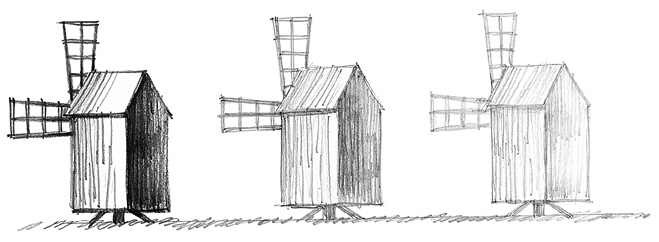
Using Values to Create Depth
In this grouping of trees, the value of the closest trees contrasts more against the background than those farther away.
Atmospheric perspective, also referred to as aerial perspective, uses definition and values to create the illusion of depth and distance. Atmospheric perspective relies on the idea that the closer something is to the viewer, the more it is defined and the more its values contrast. For instance, trees close to the viewer will show more detail and more color variation than trees farther away.

Using Values to Create Depth
In this grouping of trees, the value of the closest trees contrasts more against the background than those farther away.

Linear Perspective Only
Depth in this scene relies on the size differences established by linear perspective. The larger windmill seems closer to the viewer than the smaller ones. Atmospheric perspective is not used to show the distance between the windmills.

Atmospheric Perspective Only
All three windmills are the same size, so no linear perspective is used. The only difference is the intensity of their values, which makes them look like they are progressively more distant, going from left to right.

Combined Perspectives
By combining linear and atmospheric perspectives, the depth of the scene is expressed through size and value contrast.